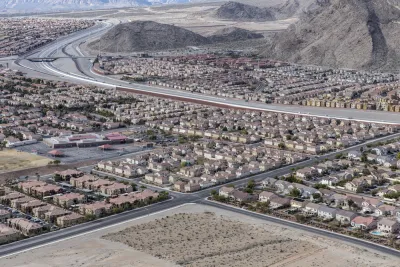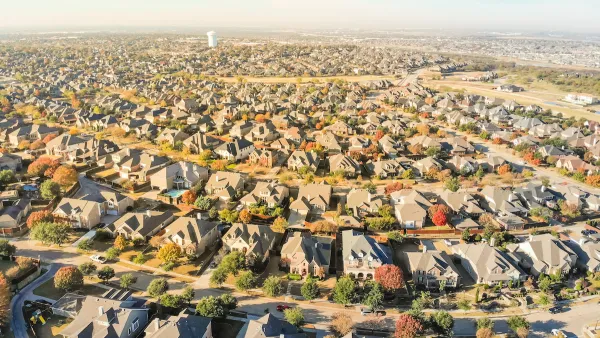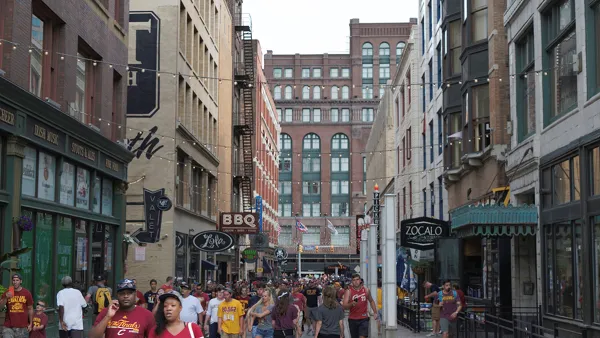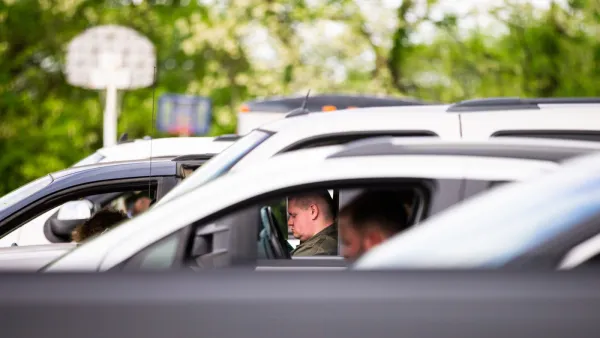Low-income families living in high-sprawl neighborhoods are limited in their access to education, jobs, and other amenities, often trapping them in a cycle of poverty.

New research from the University of Utah reveals that sprawl can have a measurable, negative economic impact on low-income American households.
According to a piece in Science Blog, “A series of studies from the University of Utah has found that children from low-income families who grow up in areas characterized by urban sprawl face significantly reduced earning potential compared to those raised in denser neighborhoods. The research provides the most detailed evidence yet of how city planning decisions could be reinforcing cycles of poverty across generations.”
The researchers used data from more than 71,000 U.S. census tracts, defining sprawl as “urban environments with poor pedestrian access, heavy car dependency, and sharp separation between residential, commercial and business areas.” According to the study, the annual expected income of a person growing up in a very low sprawl tract is, on average, roughly 10 percent higher than that of people brought up in high-sprawl neighborhoods.
Perhaps most striking is how sprawl affects families differently based on income level. While children from low-income families see reduced earning potential in sprawling areas, the opposite appears true for wealthy families.
The researchers note that while their study does link sprawl and lowered social and economic mobility, the causation is not entirely clear. However, “local city planners and officials need to consider the broader social implications and choose zoning patterns and regulations that are best for all residents, particularly trying to reduce sprawl and increase infill development may have a long-lasting positive impact on children’s economic possibilities.”
FULL STORY: Urban Sprawl May Trap Low-Income Families in Poverty Cycle

National Parks Layoffs Will Cause Communities to Lose Billions
Thousands of essential park workers were laid off this week, just before the busy spring break season.

Retro-silient?: America’s First “Eco-burb,” The Woodlands Turns 50
A master-planned community north of Houston offers lessons on green infrastructure and resilient design, but falls short of its founder’s lofty affordability and walkability goals.

Delivering for America Plan Will Downgrade Mail Service in at Least 49.5 Percent of Zip Codes
Republican and Democrat lawmakers criticize the plan for its disproportionate negative impact on rural communities.

Test News Post 1
This is a summary

Test News Headline 46
Test for the image on the front page.

Balancing Bombs and Butterflies: How the National Guard Protects a Rare Species
The National Guard at Fort Indiantown Gap uses GIS technology and land management strategies to balance military training with conservation efforts, ensuring the survival of the rare eastern regal fritillary butterfly.
Urban Design for Planners 1: Software Tools
This six-course series explores essential urban design concepts using open source software and equips planners with the tools they need to participate fully in the urban design process.
Planning for Universal Design
Learn the tools for implementing Universal Design in planning regulations.
EMC Planning Group, Inc.
Planetizen
Planetizen
Mpact (formerly Rail~Volution)
Great Falls Development Authority, Inc.
HUDs Office of Policy Development and Research
NYU Wagner Graduate School of Public Service





























